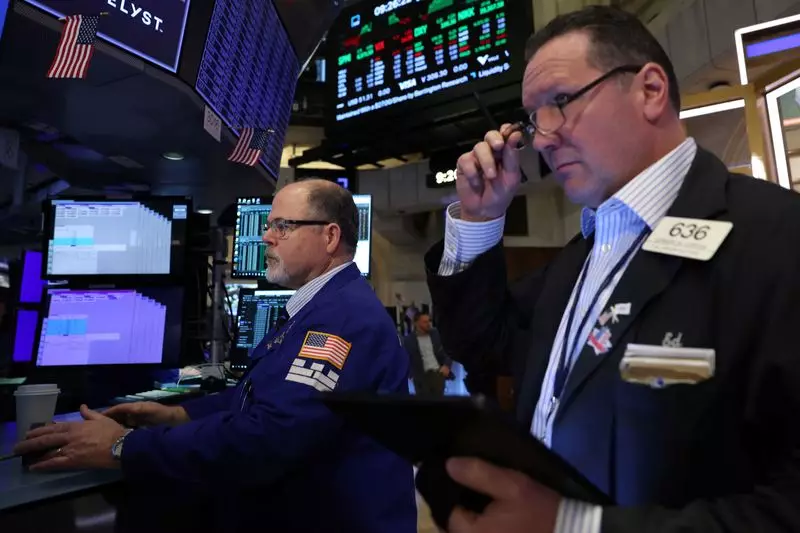In a cautious yet optimistic market landscape, U.S. stock index futures have shown an upward trend ahead of a crucial day for economic insights. As of 5:40 a.m. ET, the investors tracked a positive trajectory with Dow E-minis gaining 85 points, marking a 0.20% increase, S&P 500 E-minis rising by 16.25 points (0.27%), and Nasdaq 100 E-minis ascending by 85.25 points (0.40%). The anticipation for economic data is palpable, particularly as stakeholders brace themselves for potential changes in policy under the incoming Trump administration.
In the weeks leading up to this moment, the U.S. stock market faced considerable challenges. The notable trend witnessed in December—typically a time of robust market activity—dipped unexpectedly as all three major indexes faltered, closing lower despite initial gains. Historically, this period has been characterized by a market rally, heightening the intrigue surrounding the current economic climate. As of Thursday, both the S&P 500 and Dow Jones Industrial Average eyed weekly drops exceeding 1%, with the technology-driven Nasdaq tracking a decline of around 2%.
Complicating the outlook for investors, analysts have raised concerns surrounding the mixed signals emanating from political developments. The uncertainty surrounding President-elect Donald Trump’s policy initiatives has prompted mixed reactions in the financial markets. With the Republican party assumed to dominate Congress, there exists a heightened expectation for potentially transformative policy changes. Trump’s proposals, which include significant cuts to corporate taxes, loosened regulations, and tariffs, seethe with promise for enhancing corporate profitability. However, they also raise valid fears of inflationary pressures and a deceleration in monetary easing.
Moreover, the newly inaugurated Congress is set to hold its first session, intensifying speculation regarding the timing and nature of policy shifts. Just weeks away from Trump’s swearing-in on January 20, stakeholders await clarity on how these strategies will materialize and influence the broader economy.
With the benchmark yield on the 10-year Treasury note hovering near a critical threshold of 4.5%, market participants continue to closely monitor interest rate movements. Attractive to this analysis, the CME Group’s FedWatch Tool indicates traders are forecasting a potential 50 basis-point reduction in interest rates for the year, driven by persistent signs of economic resilience, even amidst the backdrop of recent volatility.
In the immediate future, market insights will derive from ISM’s report regarding manufacturing activities for December. Additionally, the anticipation builds around employment figures set to be released next week, further shaping economic narratives.
An important note arises from Richmond Fed President Thomas Barkin, the first policymaker to comment on economic conditions at the outset of the year. His insights could prove crucial in steering both market sentiment and investment strategies.
Market valuations remain a subject of skepticism among investors, with many expressing caution over stretched equity metrics. Nonetheless, optimism persists within brokerages, predominantly forecasting another productive year for U.S. equities, bolstered by resilient corporate earnings. As quarterly earnings reports loom on the horizon, they will function as a key litmus test for sustaining Wall Street’s two-plus-year bullish momentum.
In premarket trading, noteworthy fluctuations were observed with Tesla, which rebounded by 1.1% following a significant drop of over 6% the previous session, spurred by disappointing delivery figures. Conversely, U.S. Steel faced an 8.2% decline amid news that President Biden moved to block Nippon Steel’s proposed acquisition, marking a critical juncture in the merger’s fate. Meanwhile, Block shares benefitted from a positive brokerage rating upgrade, illustrating how market sentiments can fluctuate widely based on new information.
Looking forward, U.S. automobile sales for December remain a focal point for market analysts as trading volumes are expected to hover at subdued levels following the holiday season.
The evolving landscape of U.S. equities and economic indicators showcases a complex interplay of political developments and market forces. Investors find themselves at a crossroads, weighing the benefits of potential policy changes against the specter of unpredictable economic ramifications. As data gathers and signals emerge, the market’s resilience will be tested, challenging investors to analyze and adapt to shifting dynamics while maintaining a watchful eye on the horizon.

